Properly feeding your Pitbull is important for several reasons including overall health, disease prevention throughout the dog’s lifespan, and making sure your Pitbull stays strong and looks healthy.
It goes hand in hand with the fact that they are very active dogs. As a dog owner, it’s easy to worry about your pup getting the right amount of food.
Pit Bull breeds might need different quantities of food based on their size, age and activity level.
This article will help you understand what Pit Bull breed needs the most and how much each should be eating as a general rule.
** Disclaimer: This is not professional advice! Always consult your vet to make sure this is what your pittie needs **
Pit Bull Feeding Chart By Age
| Age | Daily Food Quantity
(Cups) |
Kilocalories
(Per day) |
Protein | Fats |
|---|---|---|---|---|
| 2-3 months | 0.5-0.75 | 140-280 | 22.5% | 8% |
| 4-5 months | 0.75-1.25 | 360-610 | 22.5% | 8% |
| 6-9 months | 0.67-1.33 | 440-880 | 22.5% | 8% |
| 10-12 months | 1.25- 1.5 | 540-940 | 22.5% | 8% |
| 1-6years | 2.5 – 3.67 | 610-1174 | 25% | 5% |
| 7 years and above | 2.5-2.67 | 610-880 | 18% | >5% |

Get the 7 Biggest Training Mistakes free report!
How Much Should A Pitbull Eat Per Day?
The short answer to how much a full-grown Pitbull should eat is between two and four cups of quality dry food each day, split into two meals. However, the amount can vary based on your dog’s age, activity level, and weight.
Adult dogs are generally fed once or twice a day. Some may do well with just one meal daily, while others may benefit from two smaller meals.
But, the best answer will come from your vet or a dog expert. Also, in case you have problems figuring out the right amount, there are dog food meal services like this one that can help you figure out the right amount of food for your pitbull, prepare it and ship it directly to your house.
The key is finding what works best for your dog and sticking to a consistent schedule.
If your dog is particularly active, consider increasing its food intake accordingly. Working dogs or those participating in agility or other types of sports will often need more calories than the average pet.
How Much Should A Pitbull Puppy Eat?
Pitbull puppies need a lot of calories to fuel their growth, the recommended amount of food is 4 to 6 meals a day where each meal is ¼ to ½ cup of puppy food.
Once they reach six months to a year, you can start transitioning them to 2-3 a day feedings with half a cup of food.
But you should always consult your vet!
Pitbull puppies need more frequent meals than adult dogs since their stomachs are smaller. They have higher energy needs as they’re growing and developing.
For this reason, puppies in general are fed more frequently than adult Pitbulls.
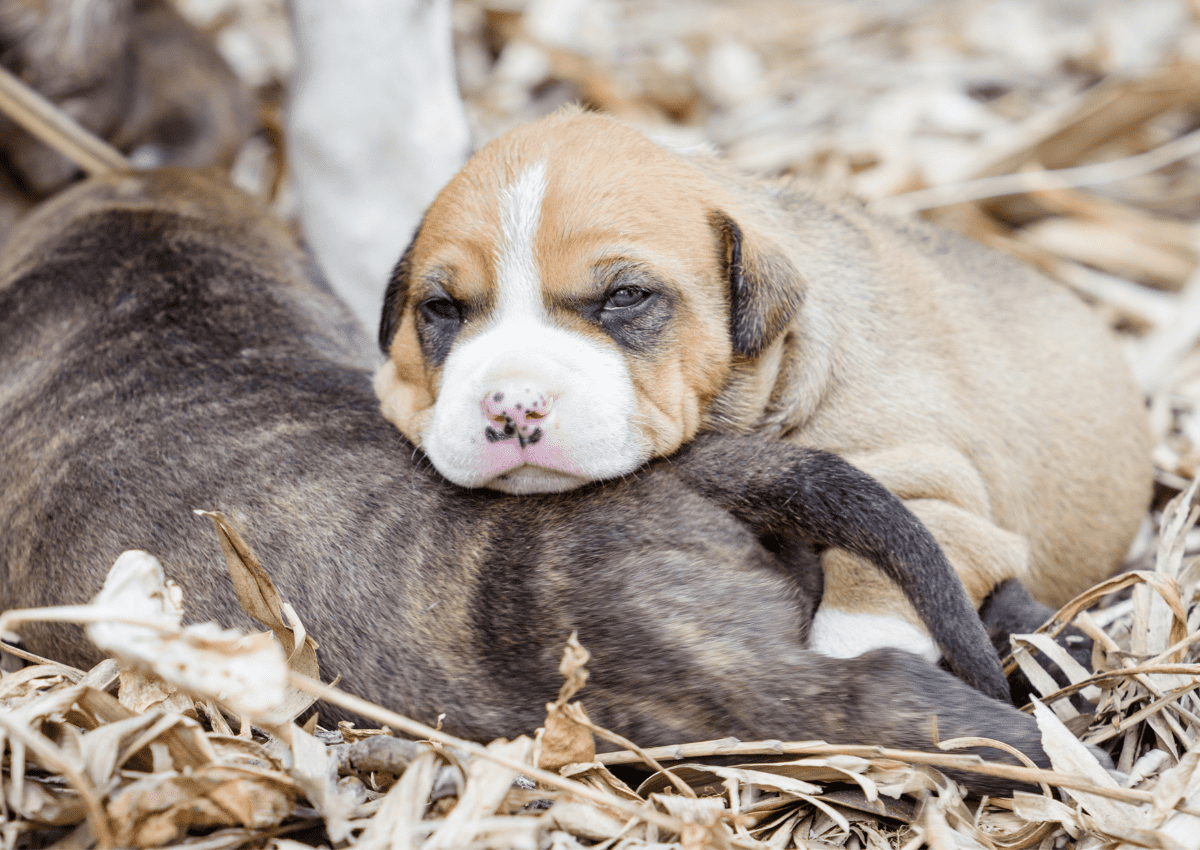
How Much Should Senior Pitbulls Eat?
Generally, senior Pitbulls should eat about one and a half to two cups of high-quality dry food per day. However, this can vary depending on your dog’s individual energy needs.
If your senior Pitbull is less active than he used to be, you may need to reduce his food intake accordingly.
Conversely, if your dog is still active, he may need more food to maintain weight.
Difference Between Puppy vs. Adult Dog Food
When choosing the right food for your Pitbull, it’s essential to understand the differences between puppy and adult dog formulas. Puppy food is specifically designed for the nutritional needs of a growing young dog, while adult dog food tailors to the maintenance and well-being of a mature canine.
As a puppy, your dog requires more nutrient and calorie-dense food to promote healthy muscular and skeletal development. The Association of American Feed Control Officials (AAFCO) recommends puppy food to be higher in protein, fat, calcium, and phosphorus compared to adult dog food. These macronutrients and minerals not only support lean muscle and bone growth but also provide enough caloric density for essential bodily functions such as breathing, digestion, and movement.
Puppy food usually contains:
- AAFCO recommended protein content of 22% dry matter
- At least 20% carbohydrates
- Higher levels of minerals like sodium, phosphorus, and calcium
- More calorie-dense than adult dog food
- Smaller kibble for tiny mouths
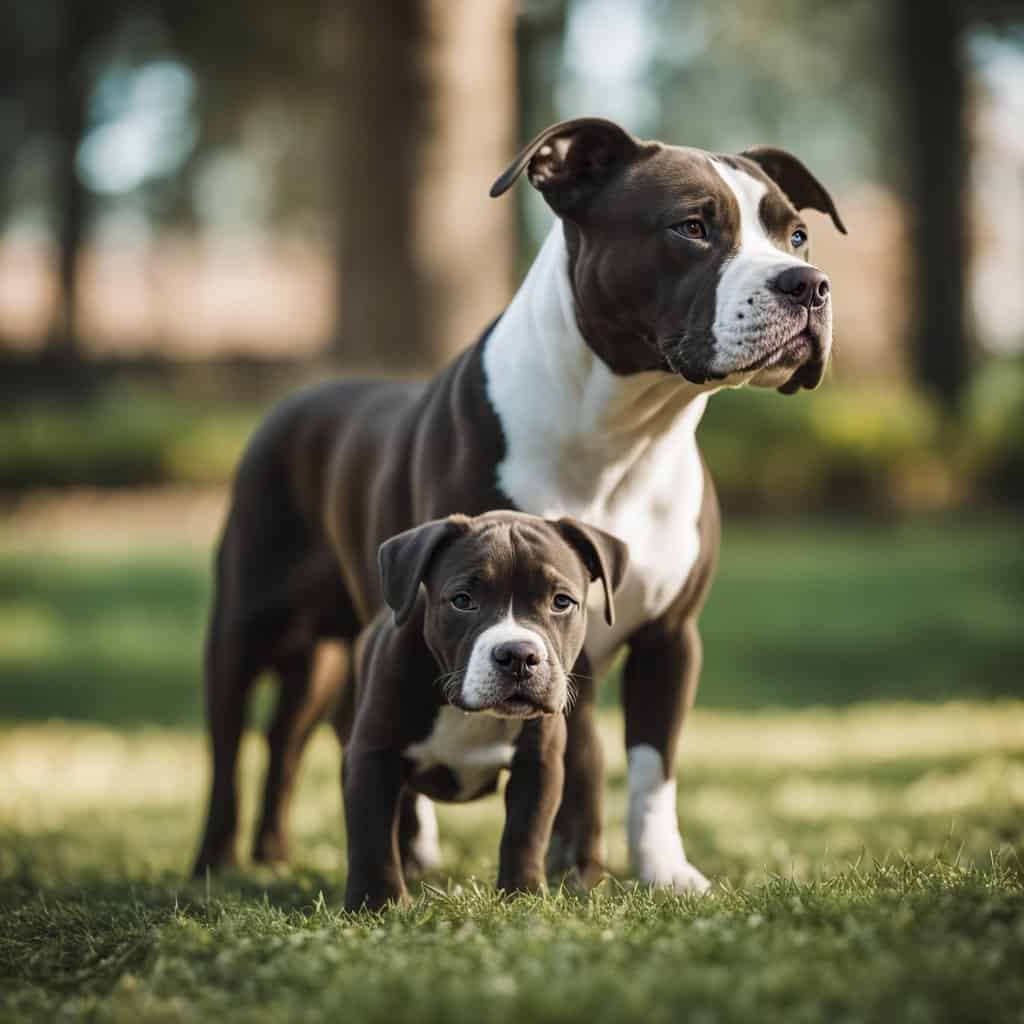
On the other hand, adult dog food is formulated to maintain your pet’s overall health rather than support growth. Adult formulas typically have less protein, fat, and essential minerals. However, they still provide balanced nutrition for adult dogs to maintain energy levels, skin and coat health, and overall wellness.
Once your puppy has reached approximately 80% of their expected adult size it’s recommended to switch to adult dog food. For large breed dogs, there are specific large breed puppy foods with balanced calcium to phosphorus ratios to ensure your dog grows at a healthy and safe pace.
Remember to choose high-quality pet food and ask your vet for personalized advice on when to transition from puppy to adult dog formula. With the right nutrition, you’ll be supporting your beloved pet’s health throughout their life stages.
What Is The Ideal Diet For Pitbulls
Pitbulls are a medium-sized breed of dog, and their dietary needs are somewhere between those of small and large species.
The ideal diet for a Pitbull should be high in protein and fat, with moderate levels of carbohydrates.
This diet will help keep your Pitbull lean and muscular while providing them with the energy they need to stay active.
When it comes to specific foods, there is no one-size-fits-all answer.
However, some good options for protein sources include chicken, turkey, fish, and beef. For fats, you can choose healthy oils like olive oil or coconut oil.
And for carbohydrates, sweet potatoes or other starchy vegetables make a good choice.
Of course, every dog is different, and you may need to experiment a bit to find what works best for your Pitbull.
But following these general guidelines should help you create a healthy and balanced diet that will keep your dog happy and healthy for years to come!
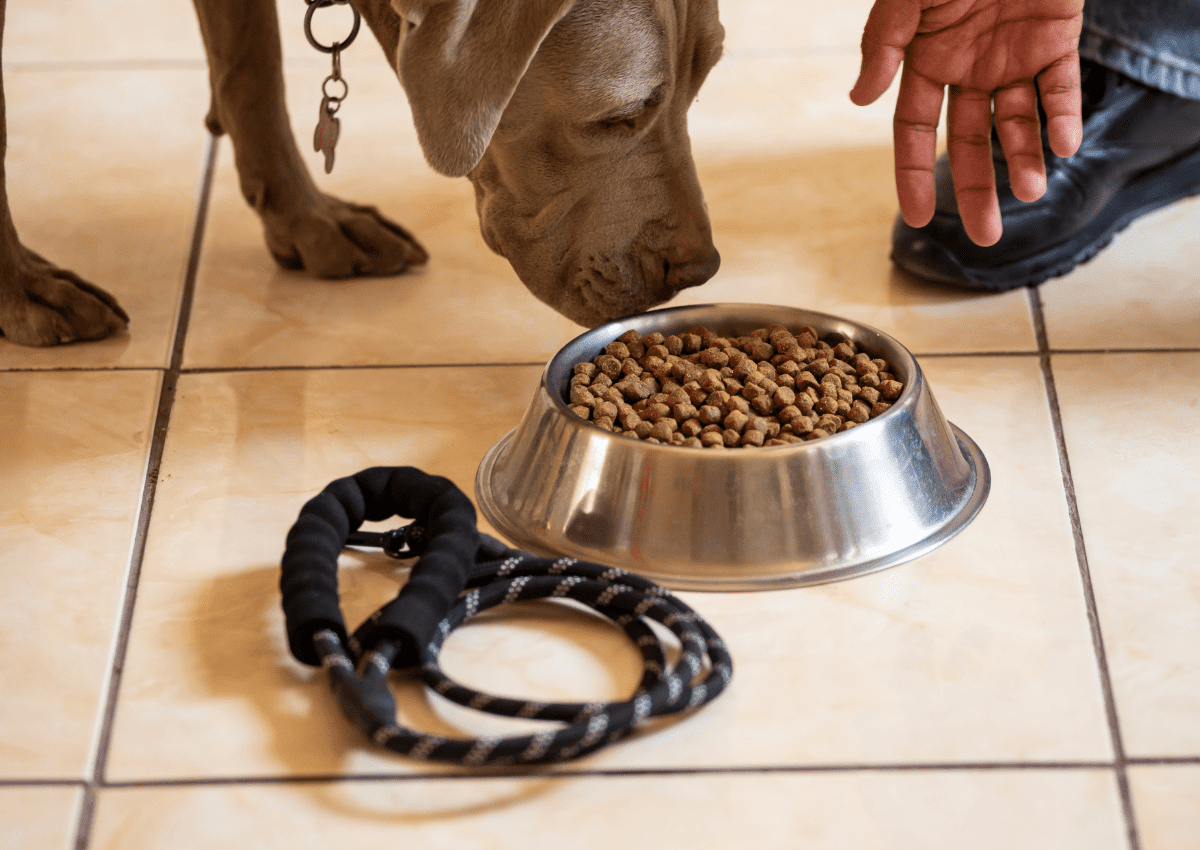
How To Feed A Pitbull
If your Pitbull requires two cups of food per day, break it up into four half-cup servings or two one-cup servings in the morning and in the evening.
Setting an exact feeding time for your Pitbull is also ideal, as it will help with training your dog to stick to a schedule and handle discipline more efficiently.
Not only does feeding your Pitbull at specific times help to create a schedule, but it is an easier way for you to regulate your dog’s weight.
Sticking to a specific schedule prevents your dog from eating whenever he pleases, and regulates their digestive tract so they have a more regular and healthy bathroom schedule.
Feeding your Pitbull at specific times also allows exercise to be more efficient, as you will be less likely to feed your dog on an empty stomach if he has already eaten for the morning or evening.
It is not unusual for dogs who are free fed to eat nothing until the evening because they simply lay around throughout the day or get distracted, so it is healthier to maintain a strict eating schedule.
Once you have your Pitbull on a regular diet and exercise schedule, it is essential that you monitor them regularly to make sure they remain healthy and are at a stable, consistent weight.
If your dog appears to be malnourished or packing on excessive weight, talk to your veterinarian to find out if a change in diet or exercise is necessary.
Pitbull Feeding Mistakes
Once your Pitbull becomes an adult, they will often become accustomed and comfortable to their feeding and exercise routine, and their body will adjust and develop in a healthy manner.
Avoid feeding your Pitbull more food just because they got more exercise one day.
If your dog typically receives two cups of food and one walk a day, the dog should still receive two cups of food even if they receive two or three walks one day.
Keeping a balanced diet that is not altered according to exercise is important for a healthy and happy Pitbull.
Rather than free feeding your Pitbull and letting them pick at their daily food intake whenever they please, set a specific feeding schedule.
The amount of food your dog should receive can be determined by your veterinarian, so take that amount and divide it into two or three servings throughout the day.
Feeding Pitbull Advice
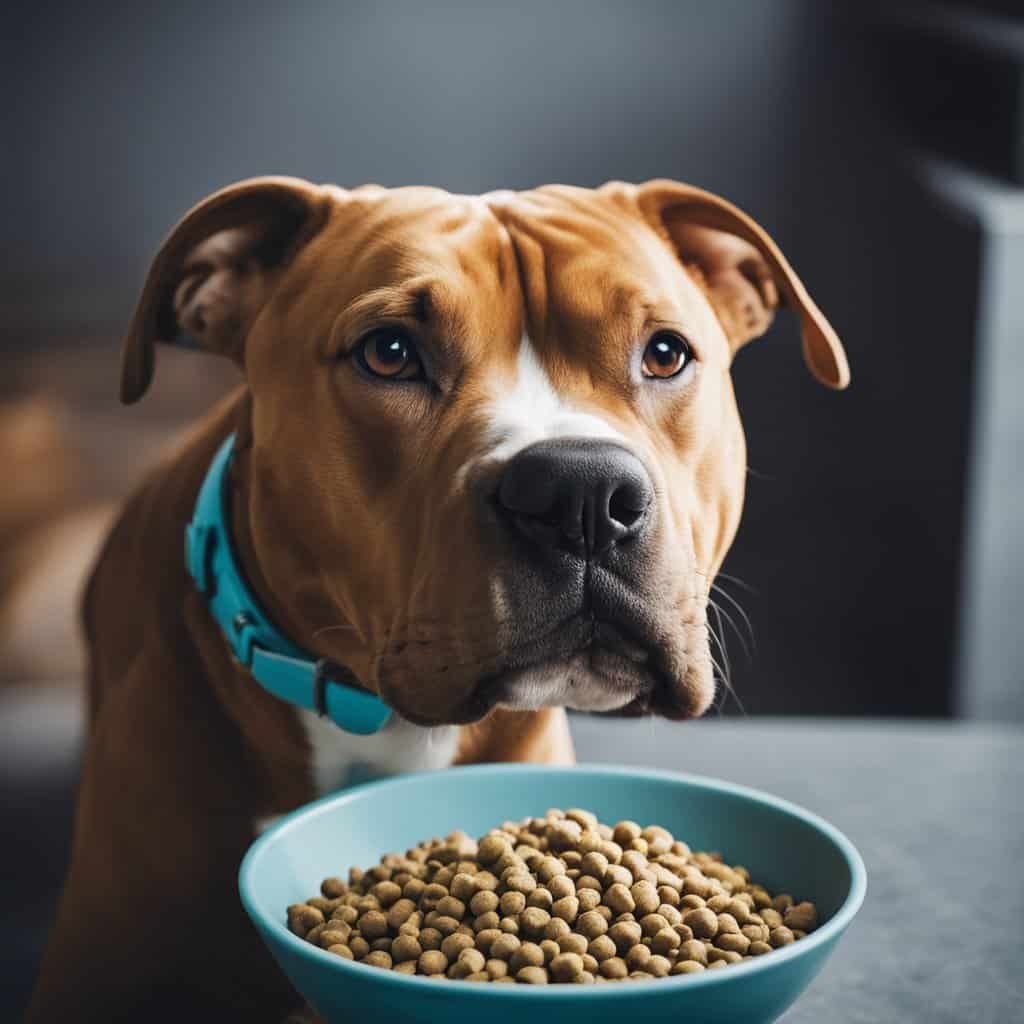
A well fed Pitbull will absorb the right amount of protein and nutrients without being malnourished, but will not be overfed to the point where they become excessively overweight and lose their overall stamina.
A lack of exercise and excessive feeding often causes Pitbulls to suffer from extra bodily strain, thus causing internal illness and injury.
Once you take a Pitbull home and start a feeding regimen, it is important that you take your dog to the vet to get a routine check up, get up to date on booster shots, and talk to the veterinarian about the ideal feeding regimen for the dog.
The type and amount of food that should be fed to a Pitbull varies from dog to dog, so once your veterinarian looks over the dog it will be easier for them to determine a specific routine that is best for your Pitbull.
As you begin following the feeding regimen for your Pitbull, make sure they are receiving regular exercise in conjunction with a balanced diet.
Pitbull Feeding Common Questions
Does Size Matter?
Pitbulls are known for their enormous appetites, but that doesn’t mean they should be eating like they’re twice their size. Overfeeding a pit bull can lead to obesity, strain joints, and increase the risk of health problems like diabetes.
So how much should a Pitbull eat? It depends on their age, weight, and activity level, but a good rule of thumb is to feed them about 2-3% of their body weight daily.
For example, a 50-pound Pitbull should eat around 1-1.5 pounds of food per day.
If you’re unsure how much to feed your Pitbull, talk to your veterinarian for guidance. They can help you create a feeding plan tailored to your dog’s needs.
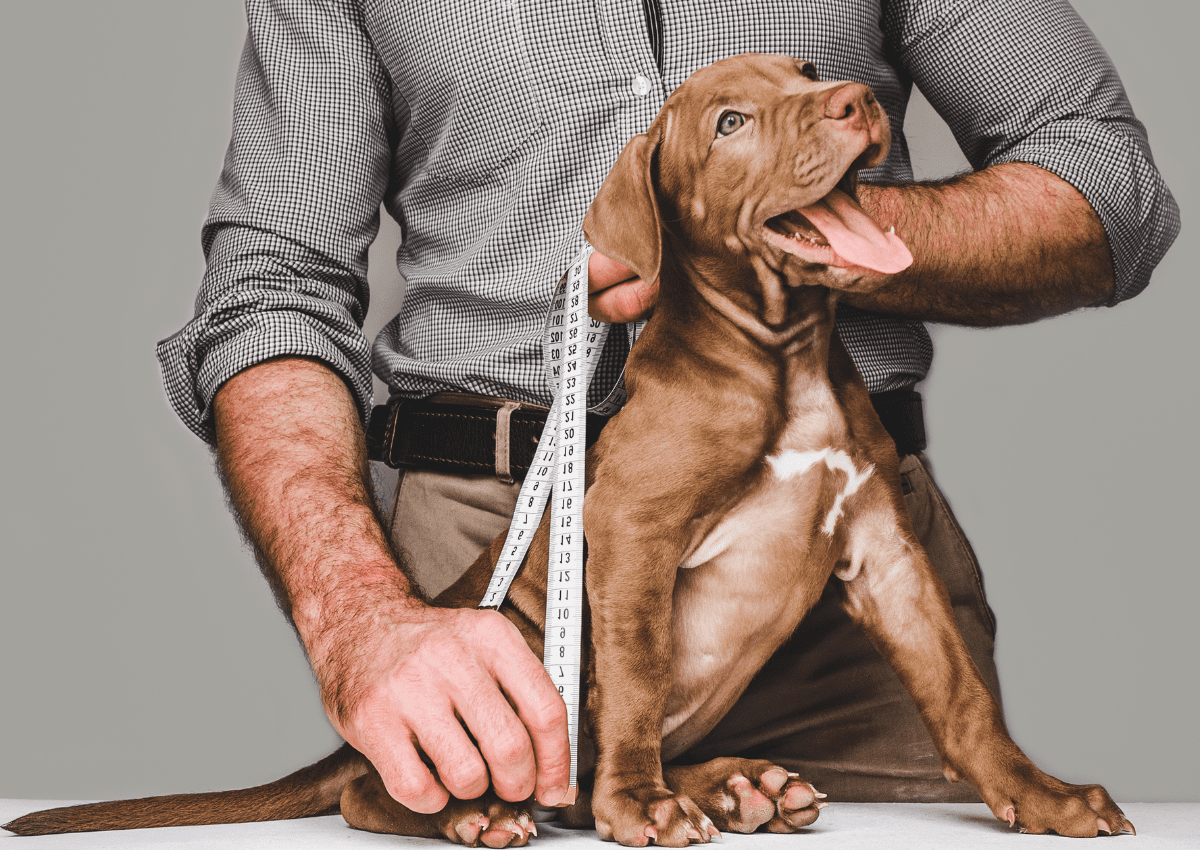
How To Maintain A Healthy Feeding Routine
To maintain a healthy feeding routine for your Pitbull is to limit treats and only give them to the dog on certain days each week.
Three or four treats a week at the maximum is ideal, but if you prefer to give your dog more treats, particularly during training, cut down slightly on the amount of food they receive in a serving for each treat the dog receives.
The treat will already be sitting in their stomach, so if your Pitbull is still receiving two cups of food, that is adding to their diet which is less likely to be burned off and more likely to contribute to inconsistently increasing their diet.
Keeping treats to a minimum or cutting down on food intake if treats are a regular part of Pitbull’s diet is integral to maintaining a healthy weight.
An adult Pitbull feeding routine is also dependent on the amount of exercise your dog gets.
Dogs who are regularly outside in a large backyard, especially with other dogs that encourage them to play and interact, are more likely to get a larger amount of exercise.
Therefore requiring more food to make sure they are receiving nutrition aside from what is being burned off.
If you walk your dog twice a day every day and regularly have them playing outside, your dogs diet will be considerably bigger than a dog that is walked once a day and does not play outside or interact with other dogs as much.
Dogs who live in a household with other dogs also receive more exercise. To make sure them all are trained on the same feeding schedule to prevent their schedules from interfering with the schedule of the other dog.
If you have a group of dogs, it is easier for you and them if they all come to dinner collectively, rather than free feeding them or allowing them to eat whenever they please.
Treats And Chews
There are a lot of different options when it comes to treats and chews for your Pitbull. You can find just about anything at your local pet store or in online stores, but there are a few things to remember when choosing the right ones for your pup.
First, you’ll want to ensure the treat or chew is made specifically for dogs.
Many human food items look tempting to our furry friends but can be dangerous for them to consume.
Please make sure any treat or chew you’re considering is safe for dogs before giving it to your Pitbull.
Second, you’ll want to consider your dog’s size and activity level when choosing treats or chews. A giant, active dog will need more calories than a smaller, less active one.
And, of course, all dogs have different preferences regarding what they like to eat!
Some prefer a softer treat, while others go crazy for a good bone to chew on.
Finally, remember that treats and chews should only be given in moderation.
Too much of treats can harm your dog’s health.
When in doubt, ask your vet for advice on how often and how many treats or chews are appropriate for your particular Pitbull.
Bottom Line
To keep your Pit Bull healthy and strong, you need to feed it a diet that provides the right amount of nutrients. Pit Bulls are carnivorous animals, so they need high-quality food consisting of meat, bones, and vegetables.
To do this, you’ll need to feed your dog high-quality food every day and ensure that it has the calories it needs at every meal.
There are a wide variety of dog foods available on the market, so the type of food that works best for one Pitbull may not be the best choice for another dog of the same breed.
It is not unusual for Pitbull owners to go through several types of food before discovering the brand that is best for their dog.
We hope this article has helped you clarify and find out how much your Pitbull should eat.

That’s a wonderful article about feedings. .I didn’t know that it’s good to have them on a schedule. I rescued a 7 month old white and grey pitbull that was being starved and dehydrated so I let him eat and drink as he pleased and I always topped the dishes off and he gobbles it up immediately and about a bowl and a half of water. He’s getting his weight back and now he’s very muscled and I want him to keep that type of physic so I will be putting him on a feeding schedule about a cup and a half a day so thanks for the heads up and I also learned to not to give him chocolate. I have been giving him pieces of nutty bars while I have been training him. So also thanks for thabit of info also